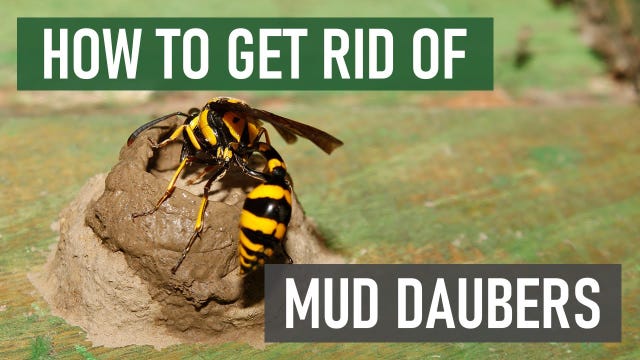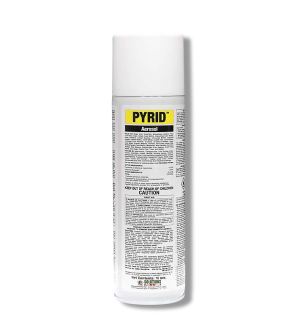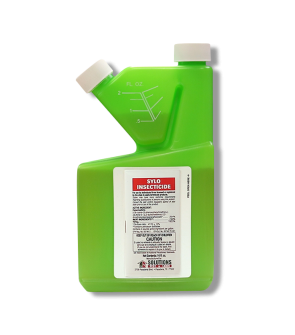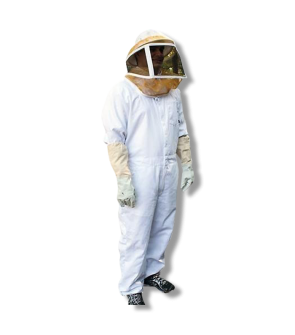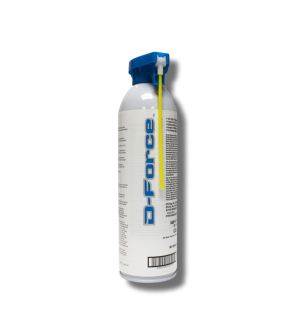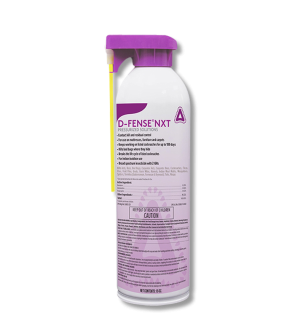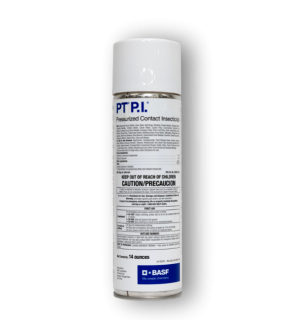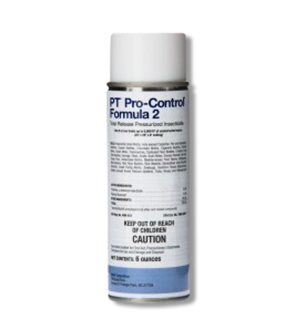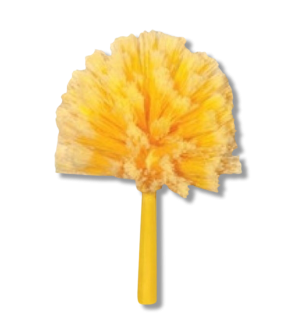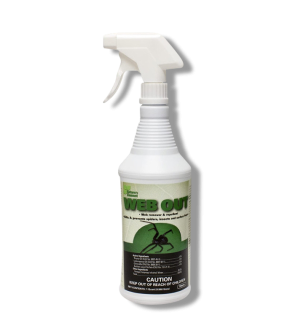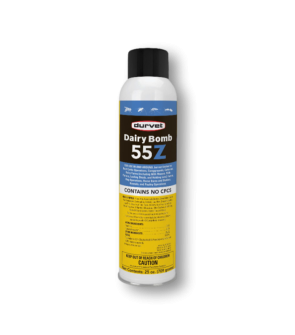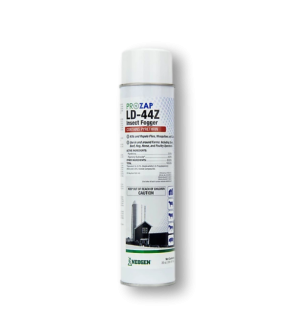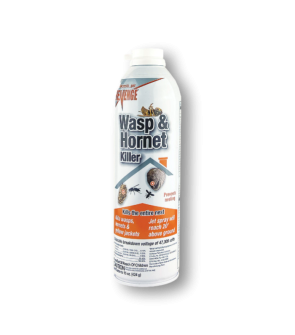Gain access to personalized product screening, the best pricing, rewards, and more!
Most Effective Products
Mud Dauber Control: How to Get Rid of Mud Daubers
This article is a general mud dauber control guide. Follow the recommended steps and products listed in this DIY guide, and we guarantee 100% control of mud daubers and their nests within your home's yard.
As their name implies, mud daubers are solitary wasps constructing their nests from mud. Though there are many species of these pests, they are commonly found throughout the northern half of the United States. While mud daubers, otherwise known as mud wasps or potter wasps, are not considered as aggressive as other stinging insects, caution should still be taken as they can sting when provoked.
Unlike other wasp species, the mud dauber does not rely on colonies for survival but can attract other types of wasps when they abandon their nests. Besides the increase of other wasps, their mud nests can be very unsightly on the side of homes and other sheltered areas. Though uncommon, they may defend their home with multiple stings like other wasp species.
Mud daubers fall under the category of beneficial insects as they pollinate flowers and hunt other insects like black widows. However, for homeowners who are allergic to stings and nests, which create an unattractive appearance on the exterior of their homes, the problems far outweigh the benefits. Follow along with the recommended steps and products to learn more about this wasp and how to completely get rid of them from your property.
Identification
Before proceeding with treatment, you must ensure the wasp invading your yard is a mud dauber. Misidentification can lead you to use the wrong insecticides, wasting your time and finances. Here are some characteristics to aid you with proper identification:

- Mud daubers are commonly mistaken for paper wasps due to their similar body shapes and their tendency to have legs hang in flight. Like paper wasps, mud daubers have two body sections. However, the biggest difference between them is that the mud dauber has a slender waist (petiole) about as narrow as a piece of string, which separates the thorax from the abdomen.
- Unlike paper wasps, mud daubers are larger in size at 1/2 inch to more than 1 inch.
- Many species feature the typical black and yellow or orange coloring, but some mud daubers are even metallic blue or black.
- It has 6 legs that hang freely when flying and a pair of antennae.
- Have a pair of wings that are colored a transparent white or a dark, rusty orange color.
Use the image and description above to help you identify mud daubers. If unsure, contact us with a photo of your pest via email, in person at one of our store locations, or simply by phone. This will allow us to properly identify your pest and suggest the correct treatment plan for the pest infesting your yard.
Inspection
You can proceed with the inspection after properly identifying mud daubers on your property. During this phase, you are looking for the areas the pest is frequently visiting, the site of the nest, and other conditions allowing it to thrive. It would be wise to wear personal protective equipment that keeps you well covered, such as a Professional Bee Suit, in the chances of becoming stung.

Where to Inspect
From spring to summer, mud daubers construct nests in sheltered sites such as along porches, sheds, decks, eaves, attics, ceilings, barns, and against walls on sides of buildings or sometimes outdoor equipment. They can also be seen around the edge of water sources like ponds, bird baths, and muddy areas, rolling the mud into balls to help form their nests. Throughout the spring season, adult mud daubers feed on plant nectar, honeydew, and the body fluids of other insects, especially spiders.
What to Look For
Throughout the fall, spring, and summer seasons, listen for the loud, rhythmic buzzing of mud daubers as they work to construct new nests or fly around in search of mating partners.
Mud daubers are solitary pests, so you will typically see one adult female pest build one single tube or multiple side-by-side skinny tubes similar to organ pipes with varying lengths, measuring about 1 inch long. Different species of mud daubers will create differently shaped nests, but they are usually tubular with one exit hole per tube.
Within these tubes, the female mud dauber fills them with paralyzed spiders for the larvae to feed on, and inside each tube, one egg can be found on top of these remains. Nests with an open round hole on the outside are more than likely inactive. Be sure to note any spider activity on your property, webs, and nests, as mud daubers commonly hunt these pests.
Treatment
Though these pests are not known for stinging, they still have the potential. Make sure you are wearing the appropriate personal protective equipment, such as a thick, long-sleeve shirt and pants, safety glasses, gloves, or, for the utmost protection against stings and chemical exposure, a professional bee suit.
Pesticide applications during the late evening or early morning are recommended as mud daubers are known to be less active during these time frames. The most effective way to kill mud daubers is to remove their nest and food source and directly spray pests with an aerosol insecticide that provides a quick knockdown.
Step 1: Remove Spiders and their Webs
When homeowners think of spiders, the last thing on their minds is that this pest could be the cause of other insects on their property, in particular, the mud dauber.
When this favorable food source moves in on your property, so will the mud dauber. If you are quite active in your yard, then running across either of these pests may be less than ideal.
Depending on the species, the spider may make its web alongside your home, in corners of high ceilings, and often make nests in attics, garages, basements, and wherever there might be clutter.
We recommend you first remove spider webs or nests with a Web Out Cobweb Eliminator, Cobweb Duster, and an extension pole. Web Out Cobweb Eliminator is a ready-to-use organic spray pesticide that dissolves spider webs and egg sacs and keeps the spider itself away for at least 30 days or more. Shake the Web Out Cobweb Eliminator and spray directly on the web, eggs, and areas around it.
Once the webbing is thoroughly wet, brush it away with your JT Eaton Yellow Cobweb Duster. Its bristle-headed head helps to brush away webs and dust easily. For those hard-to-reach areas, you will need to attach it to an extension pole like Extender Pole Webster.
Step 2: Directly Spray Pests
Once the larvae are finished developing, the mud dauber will reuse its nest to lay the next generation of eggs. Depending on the species, the mud dauber creates one or two generations per year. Before removing the mud dauber nest, you may need to eliminate any wasps protecting it. We recommend treating mud daubers with an insecticide with a quick knockdown before physically removing the nests from the area.
Pyrid Insecticide Aerosol is a ready-to-use pyrethrin aerosol designed to treat various insects quickly, such as mud daubers. This product works immediately on contact, knocking down pests that make contact with the spray. Use the product as a direct spray on outdoor areas where you have noticed the mud daubers. This product does not have a residual, so mud daubers will have to make contact with the spray to be affected.
To use Pyrid Insecticide Aerosol, you will need to shake the can well before application. Apply Pyrid Insecticide Aerosol directly on present mud daubers from approximately 18" and contact as many of these pests as possible.
Once all pests have been eliminated and there are no signs of activity, you can scrape the nest off with a scraping tool like a paint scraper or break it apart. If you are using a scraping tool, older nests may need to be softened with water. Remove nest residues with water on surfaces that cannot be scraped.
Do not allow people or pets to enter treated areas until the sprays have dried, and do not allow the spray to contact plastic, painted, or varnished surfaces.
Prevention
After mud daubers have been eliminated from your property, you will want to ensure they do not return. Below are some preventative measures to decrease the likelihood of mud daubers returning to your yard.
- Regularly eliminate spider webs and reduce clutter in and around your home to prevent spiders.
- Maintain a regular lawn care practice by mowing when turf reaches 3 inches, raking fallen leaves and other plant debris, and pruning decaying or overhanging tree branches and limbs. These practices can help reduce the environmental conditions needed by other insects to survive, thus reducing food sources for mud daubers.
- Scrape away past mud dauber's nests after they have been treated with Pyrid Insecticide Aerosol. You may also spray with water to remove vacant mud dauber nests on surfaces that cannot be treated with products.
- Seal cracks, crevices, and voids with caulk to limit potential nesting and feeding sites for insects and mud daubers. Mud daubers prefer secluded areas, so preventing access to them helps deter them from your home.
- The best way to prevent mud daubers from establishing themselves on your house is to apply a repellent insecticide and eliminate the mud daubers' food source. We recommend you use a product like Sylo Insecticide. Sylo Insecticide is an emulsifiable concentrate that must be mixed with water, so we recommend using a handheld pump sprayer. The rate you will apply is 0.5 fl. oz. of Sylo Insecticide per 1,000 sq. ft. of treatment area. Once your solution is mixed, spray the areas where you noted mud daubers nest. You will also need to treat along eaves and any entry points, such as around doors and windows. Then, conduct a barrier treatment by spraying along your structure's outer perimeter, going 3 feet up the structure and 6 to 10 feet out. When finished, keep people and pets away from treated areas until the product dries completely. When dry, the product will leave a residual that will continue to treat the area for up to 90 days. Labeled pests that make contact with the residual typically die within 20 minutes. We recommend you make this application quarterly to maintain year-round control.
Key Takeaways
What are Mud Daubers?
- Mud daubers are wasps that do not live in colonies and create their nests from mud.
How to Get Rid of Mud Daubers
- To address mud dauber invasions, use Web Out Cobweb Eliminator to remove spider web nests and egg sacs, then brush them away with a duster attached to an extension pole. Then, in the evening, when pests are less active, treat mud dauber nests with Pyrid Insecticide Aerosol.
Preventing Mud Dauber Reinfestation
- To prevent mud daubers from returning to your property, you must continue with regular lawn care practices to reduce habit and food sources for other insects. Spray Sylo Insecticide around your home's foundation and entry point every 3 months to keep mud daubers and insects away.






